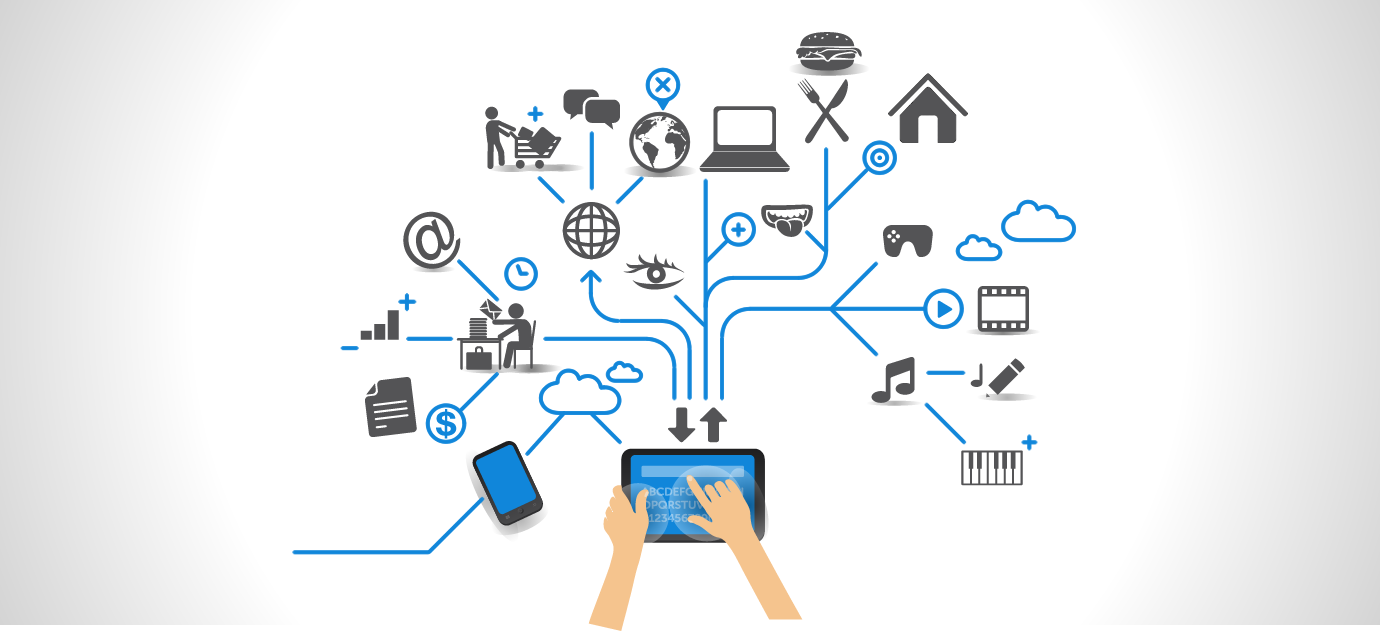One of the most prolific buzz words of 2014 was “Internet of Things” or “IoT”. The internet is changing and with it will come an enormous influx of digital information and the task of managing, processing, storing, sorting and using all of the data. Recent reports are forecasting that by the year 2018 things connected to the Internet will grow from 1.9 billion to 9 billion!
Objects that have never been connected to the Internet will soon be able to reach out to the World Wide Web and connect with everything and anything. Today we are already seeing devices from billboards to refrigerators communicating with our handheld electronics such as tablets, smartphones and wristwatches. Right now, we have the ability to control almost everything in our homes with a simple Internet connection. Lighting, running water, ovens, surveillance cameras, burglar alarms and thermostats are all manufactured with remote access from smart phones and tablets. This is all on the consumer side of the equations and once you factor all the commercial uses of the Internet of Things and access to electronic data you get a phenomenal amount of data and information processing. This is an incredible amount of digital information but where does it all go, how do you manage it and where do you find the mission critical facilities it will take to support the massive amount of computing power necessary to handle it all?
Whether corporations and institutions have their own data centers or they are utilizing the benefits of a colocation provider, most data centers cannot support high power-dense computing requirements or water-cooled computer IT systems that will drive the future of data processing and storage in the 21st century. “Liquid Cooling” is a hot topic right now and with the increase in the amount of computing power that we will see in the next decade, it will be common place for IT systems to require advanced cooling methodologies. Unfortunately, a large majority of data center operators have shied away from delivering liquid cooling solutions in their facilities. Whether IT infrastructure utilizes water-cooled rear-door heat exchangers, in-row coolers or servers that have liquid coolant running over the internal processors and memory, there must be a an equally advanced data center facility equipped to support these new technologies.
Power and cooling in a data center go hand-in-hand. Knowing how much power your IT infrastructure needs is just the beginning. Once you have determined the power requirements, you must ask other questions to ensure your data center facility can handle your current needs and grow with you as technology marches onward.
Questions such as:
1. How much power can your data center support per square foot?
(Typical data center support a range of 100-250 watts/square foot while the high power density data centers can support 600+ watts/square foot)
2. If you are in a colocation facility, does your data center offer metered power?
(You can save thousands, if not hundreds of thousands of dollars per year taking advantage of metered power and only paying for what you actually use.)
3. Does your data center offer N, N+1 or 2N redundancy?
(Not all computer systems and applications have the same urgent need for redundancy, some may only need N level of redundancy while other super critical systems will require 2N)
4. Does your data center provide for hot or cold aisle containment systems?
(This medium power density cooling technique will provide much higher watts/square foot of power without the added cost and concerns with water cooled systems)
5. What if I need more power? How quickly can it be added, what is the total cost and will it require more space to cool the heat load?
These questions and many others will help you determine if your current data center facility is up to the task of supporting the next wave of technology that will help drive IT well into the 21st century.
Partnering with a colocation facility that is an authority on high density cooling and has a proven track record with high power-dense IT installations will offer you peace of mind that your IT infrastructure is in a state of the art facility that can handle the power and cooling challenges that the Internet of Things is bringing our way.
Contact DataSite today to discuss how we can partner with you to house and support your high density power IT infrastructure. Call us at 877-374-2656 or schedule a data center tour at one of our three locations - Atlanta, Boise or Orlando today!



